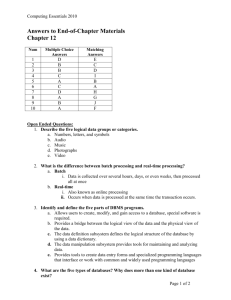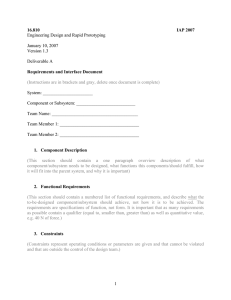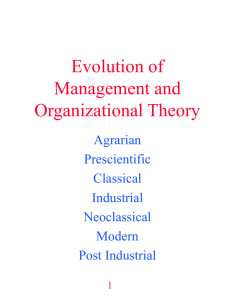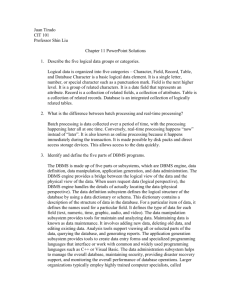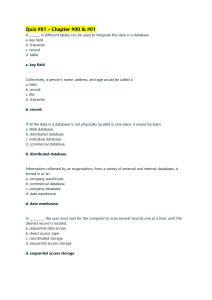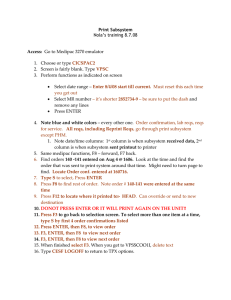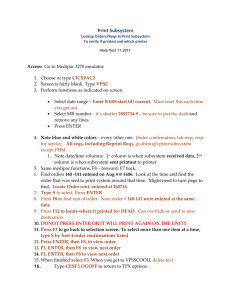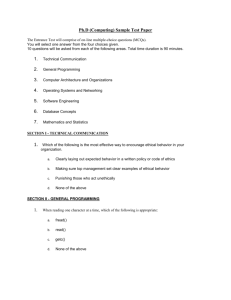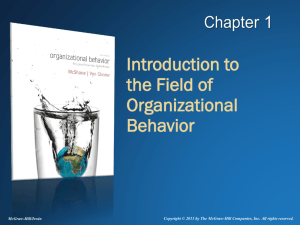QuizChapter12
advertisement
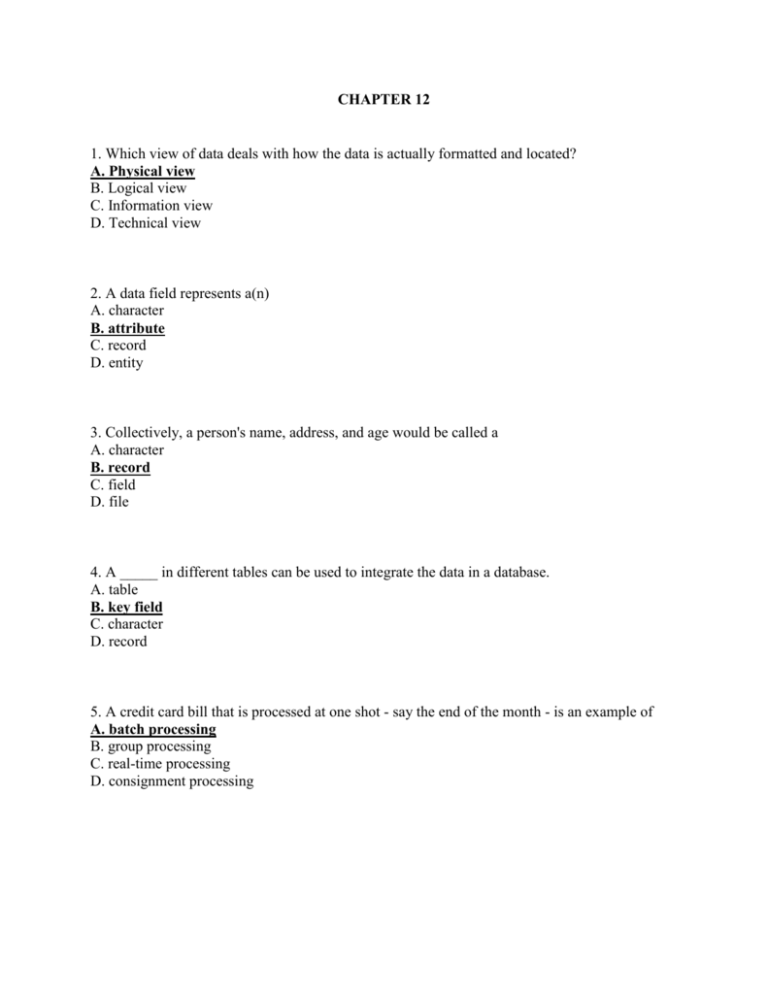
CHAPTER 12 1. Which view of data deals with how the data is actually formatted and located? A. Physical view B. Logical view C. Information view D. Technical view 2. A data field represents a(n) A. character B. attribute C. record D. entity 3. Collectively, a person's name, address, and age would be called a A. character B. record C. field D. file 4. A _____ in different tables can be used to integrate the data in a database. A. table B. key field C. character D. record 5. A credit card bill that is processed at one shot - say the end of the month - is an example of A. batch processing B. group processing C. real-time processing D. consignment processing 6. Having several instances of the same data is called A. data repetition B. data duplication C. data doubling D. data redundancy 7. If Mr. Smith's bike has been sent to his new address, but the bill to his old one, it can most likely be attributed to a A. lack of data integrity B. lack of data maintenance C. lack of data redundancy D. lack of data administration 8. Which of the following is not an advantage of using a database? A. Security B. Reliability C. Sharing D. Integrity 9. The data manipulation subsystem can use query-by-example as well as A. SQL B. HTML C. XML D. VBA 10. The feature of describing the entry field in a data dictionary form as 'text' is characteristic of A. data manipulation subsystem B. application generation subsystem C. data administration subsystem D. data definition subsystem 11. The DBA can create user forms and menus using the A. data administration subsystem B. DBMS engine C. data definition subsystem D. application generation subsystem 12. The data and the DBMS are stored either on the user's hard-disk drive or on a LAN file server in these databases. A. Company databases B. Individual databases C. Commercial databases D. Web databases 13. A common operational database is a type of A. distributed database B. individual database C. shared database D. commercial database 14. The combined information presented on a _____ can be used to change the whole merchandising strategy of a store. A. commercial database B. individual database C. company database D. distributed database 15. If all the data in a database is not physically located in one place, it would be a(n) A. individual database B. Web database C. commercial database D. distributed database True / False Questions 1. Data typically consists of numbers, letters, and symbols. True False 2. The logical view of data focuses on meanings and content of the data. True False 3. A record is a collection of related tables. True False 4. Database tables can be related or connected to other tables by common key fields. True False 5. The ATM works on the principle of real-time processing. True False 6. Data redundancy results due to lack of data integrity. True False 7. In order to create, modify, and gain access to a database, special software called the database management system is required. True False 8. Querying the database and generating reports is assisted by the application generation subsystem. True False 9. Typically, database administrators are employed to interact with the database administration subsystem. True False 10. Relational database tables require a common data item or key field. True False
